How to clean a filter in a washing machine: an overview of best practices
The design of automatic washing machines includes such elements as filters: drain and jellied. They provide protection of equipment from pollution and breakdowns. In order for filters to perform their functions, they are periodically cleaned.
Manufacturers recommend doing this every six months. Having figured out how to clean the filter in the washing machine, you can do it yourself, without professional support. You must admit that such skills will save the family budget and allow you to solve the problem quickly, without waiting for the master to come.
But before starting work, it is necessary to study all the nuances of the process. We will tell you what are the reasons for a quick clogging of the filter and how to understand that it is time to clean it. In addition, we will provide step-by-step instructions for removing contamination, and also list methods for preventing clogging of the filter device.
The content of the article:
Cleaning the drain filter
Using a drain filter, waste water is cleaned of various debris (coins, buttons, etc.). The filter element may become clogged by the presence of impurities and heavy elements in the water.
Cleaning is necessary in order to prevent small organic and inorganic impurities from entering the pump and nozzles, which can damage parts.
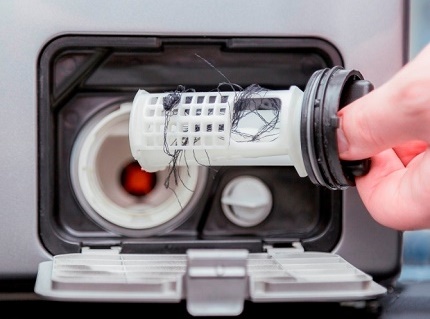
Signs of cleaning
The drain filter is also called drainage, trash and pump filter.
Signs indicating the need for the procedure are:
- termination of all functions;
- difficulties in draining the liquid, during which it slows down or completely stops;
- when switching to "Spin»The system instantly shuts down;
- the rinse function is not performed.
Each of the listed signs is a signal to take actions to free the filter from debris.
Procedure Flow
Before removing the filter, it is necessary to stock up a container for water discharge and dry rags, covering them with a car and slipping them under the bottom. The fact is that even after discharge, a certain amount of water remains in it. Rags absorb liquid and protect the floor from moisture.
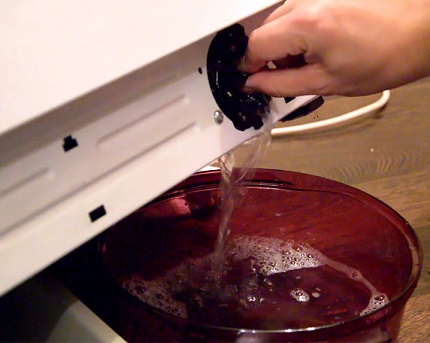
This is done because in some models there are nodes that are not able to disconnect from the power supply instantly. After you make sure that the machine is completely turned off, you can begin to work. Before removing, the filter cover is unscrewed and pulled out of the socket.
After that, the following manipulations are carried out:
- Rinse under running water.
- Brush contaminated areas.
- Cleaning from limescale and getting rid of bad smell by soaking in a solution of citric acid and water.
The filter seat in the machine is also cleaned, as debris can get stuck in it. To make the procedure easier, use a flashlight to illuminate dark areas.
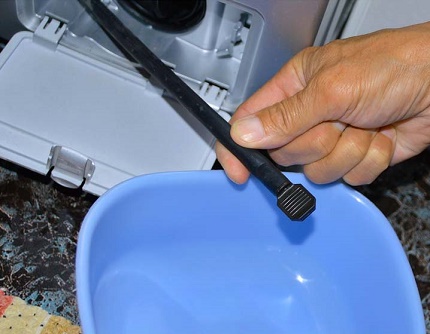
After removing debris and rinsing under running water, the clean part is replaced.
Problems and solutions
You may encounter a problem when cleaning the filter element. It consists in the fact that the lid does not rotate.
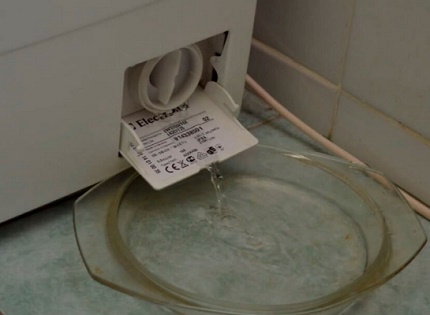
In such a situation, if you have a brand car Indesit, put the machine on its side and remove the pump. If the model is without a cap, you will see a pump. If there is a cover, it must be removed. After that you need to disconnect the wires. Next, you will need to unscrew the bolts holding the part and disconnect the electrician from the pump.
The filter is then treated with WD-40 liquid, opened and cleaned. After the procedure, the actions are carried out in the reverse order. When screwing the cover, pay attention to how tightly it is twisted. A loose screw cap will let water through.
For machines of different brands and models, the characteristics are different, so before working, you must familiarize yourself with the corresponding section in the manual. Knowing their features, you will avoid difficulties. For example, in washing machines, the filter of which is fixed with a screw, you will need to first unscrew the screw.
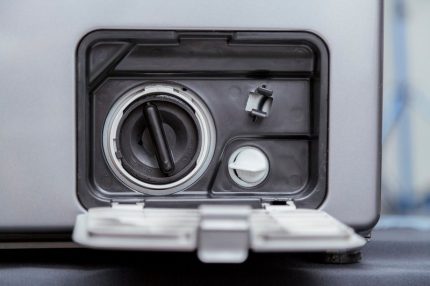
If the drain filter is not provided in the design, remove the washing machine body, check the cochlea, drain pump and nozzles. Read more about disassembling units from different manufacturers in this article.
For cars like Samsung, Ariston and Indesit, the drain filter is located below the front side. In models LG and Bosch, he is located behind the decorative hatch in the lower right.
Cleaning the inlet filter
In washing machines there is also a filler filter element in the form of a mesh that does not allow foreign objects and impurities to pass through. Such devices are not provided in all models of machines.
Signs of clogging in the inlet filter are:
- reduced pressure of water entering the machine;
- increased washing time;
- the device works well, but when filling it buzzes and does not fill with liquid.
The element is connected to the inlet hose and is located near the water supply valve.
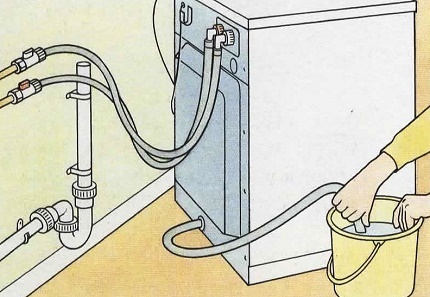
Step-by-step cleaning instructions
To fix the problem you will need to clean the inlet filter.
This is done in the following sequence:
- Shut off water before cleaning.
- The filler tube is removed, after which the filter mesh will be visible.
- The grid is removed using pliers. This must be done carefully, as it is very fragile and can break.
- The recovered element is cleaned and washed with water.
- The clean filter is returned and the hose is attached.
Models may vary in design, but the procedure remains the same.
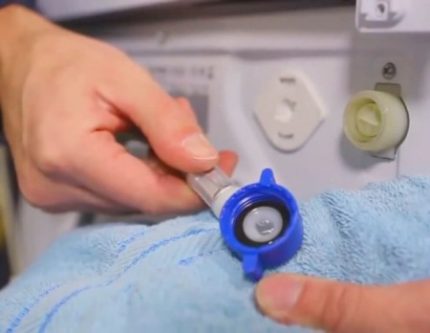
Particular attention is paid to the filter, which is usually located under the cover, in range.
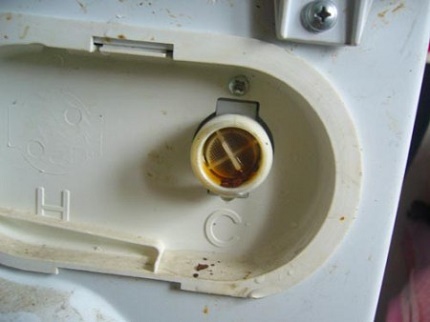
It is not possible to clean the filter inside the washing machine, therefore it must be removed.
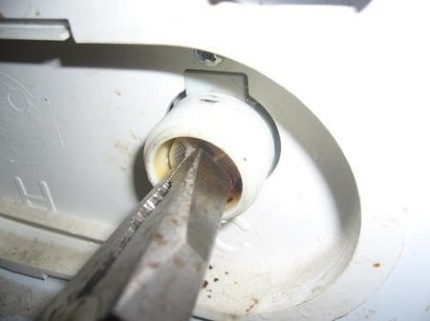
When using pliers, you need to be as careful as possible so as not to damage the filter.
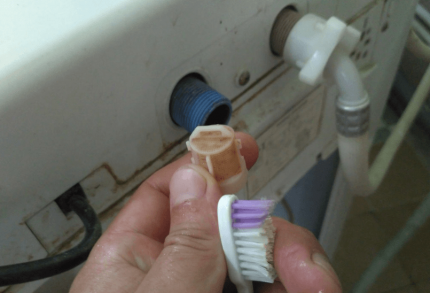
The filter is affected by the quality of the water. The stiffer it is and the more impurities it contains, the more often it will be necessary to carry out cleaning. For the smooth operation of the machine, you can use special filtersoptionally installed for washing machines.
Types of pollution and factors causing them
Before cleaning the filters, it is necessary to determine the type of contamination and the reasons for their appearance. To prevent the formation of dirt, there are preventive methods and tools. Knowing the causes, consequences and ways to resolve the problem, you will extend the operational life of your machine and ensure its smooth operation.
In addition to ordinary garbage that enters the washing machine along with things, ordinary dirt, limescale, scale and mold deposits . To eliminate them, there are different ways and improvised means. With their help, you not only clean the filters, but also prevent the appearance of contaminants.
The causes of filter contamination are:
- hard water;
- particles, villi, separated from the clothes being washed;
- untimely cleaning and drying of all elements of the machine;
- poor quality powders and other detergents.
Consider the main types of pollutants and how to eliminate them.
Poor quality water is becoming one of the main reasons for the formation of scale and lime scale on filters and other parts of machines. For cleaning washers can use professional and home remedies.

Professional tools are selected in accordance with the functional features of the device and your financial capabilities.
A simple and affordable means is whiteness. Cleaning can also be done mechanically, but not independently, but with the help of specialists who use special devices for these purposes.
If dirt gets on the filter, pile from clothing, as well as with untimely cleaning and the use of low-quality detergents, deposits of dirt, mold and an unpleasant odor are formed. Cleaning is carried out, as in the first case, by home and professional means.

In addition to vinegar and citric acid, the use of copper sulfate and soda, as well as whiteness, is recommended. After cleaning and rinsing, all parts must be wiped with a clean, dry cloth and dried.
Folk remedies in the care of the unit
Consider the main tools used to clean the drain filter, and how to use them. These are proven effective methods that you can use to prevent and clean filters with simple do-it-yourself tools.
The use of citric acid
Citric acid is an affordable and cheap odorless product.
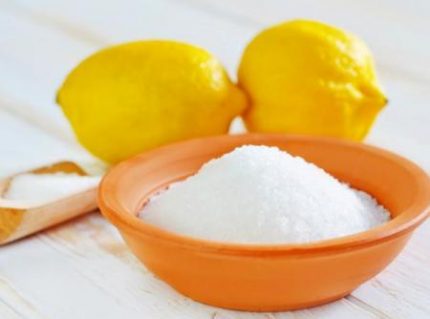
rules use lemons:
- Pour 60-100 grams of acid into the powder container. The amount of the product is determined by the length of time during which the cleaning was not carried out.
- Turn on the device for a full cycle at a temperature of 60 degrees or more. The maximum temperature regime is selected if the machine is very dirty.
- Remove dirt and acid residues by rinsing. If the machine is not completely clean, repeat the procedure.
Upon completion, the filter is cleaned of the remaining plaque.
The washing process using citric acid was demonstrated in the video:
Soda filter cleaning
Soda is an affordable mold cleaner. Soda clean all the parts on which it is formed.
Mode of application:
- One to one soda is diluted with water.
- In a solution of water and soda, the fabric is moistened.
- An impregnated cloth is wiped off the mold elements.
- After several hours, they start the wash.
- At its end, the remaining dirt is removed manually.
The procedure can be repeated several times, depending on the degree of contamination.
Using table vinegar
When using it, not only mold and scale are removed, but also an unpleasant odor.
Mode of application:
- 200 ml of 9% vinegar is poured into the powder tray.
- Include washing at a temperature of 60 to 90 degrees.
- After filling the machine with hot water, pause for 1 hour.
- Continue washing until complete.
- Clean the filter from the remaining pollution.
Then wipe all surfaces with a clean, dry cloth and allow to dry.
With vinegar cleaning technology, it will demonstrate the video:
Whiteness in the fight for cleanliness
The tool can be attributed to both professional and home. Simple and affordable, it has a pungent odor. Provides high-quality cleaning of the drain filter.
Method of use:
- White is poured into the powder filling container.
- They turn on the cycle that is the longest in time and with a high temperature for 15–20 minutes, put the machine on pause and leave it for 2 hours.
- Include washing and rinsing.
- Start the rinse cycle again.
At the end, wipe the parts dry with a rag.
Application of copper sulfate
It is a great, easy to use, affordable, odorless product.
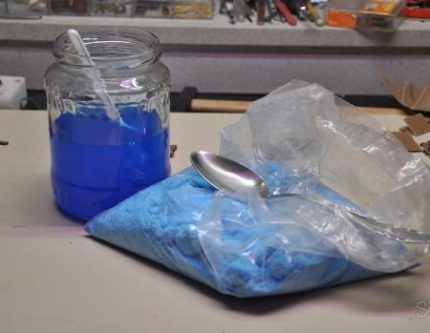
Instructions for use:
- A powdery substance (30 g) is diluted in 1 liter of water.
- Wipe all the insides of the machine and leave for a day.
- Launch the wash with any washing powder.
As in other cases, include an additional rinse program, and at the end of cleaning, wipe with a dry cloth.
If you don’t want to do dirty work yourself, you can call the plumber. Professional cleaning eliminates the need to do work unusual for you.
Conclusions and useful video on the topic
You can find out how the cleaning process works in practice and how effective it is from the videos below.
Cleaning the water filter system filter:
How to clean the drain filter:
Summing up, we can say that the operational life of an automatic washing machine depends on proper care. Cleaning can be done both independently and with a call to the house of specialists. Do this at least twice a year.
It’s easy to figure out how and how to clean the filters. To do this, you need to determine the type of contamination and the type of product that will help you remove it. The prophylactic methods available to every housewife are also effective. If you do not want to clean and wash the washing machine, call those who will do it efficiently and professionally.
Have something to supplement, or have questions about cleaning the drain and inlet filter of the washing machine? You can leave comments on the publication, participate in discussions and share your own experience in removing contaminants from machine parts. The contact form is located in the lower block.

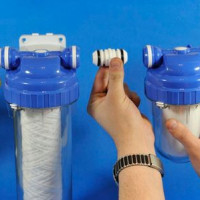 Filter for a washing machine: overview of types, selection criteria + installation features
Filter for a washing machine: overview of types, selection criteria + installation features 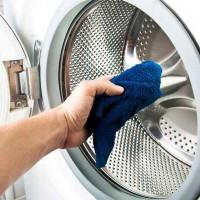 How and how to clean the washing machine: the best ways + an overview of special tools
How and how to clean the washing machine: the best ways + an overview of special tools  Unpleasant odor in the washing machine: causes of odor and methods for eliminating it
Unpleasant odor in the washing machine: causes of odor and methods for eliminating it 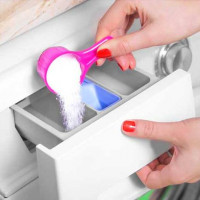 Where to put powder in the washing machine and how much powder to pour: balance of efficiency and economy
Where to put powder in the washing machine and how much powder to pour: balance of efficiency and economy 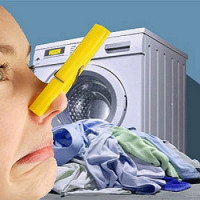 How to get rid of mold in the washing machine with improvised means at home
How to get rid of mold in the washing machine with improvised means at home 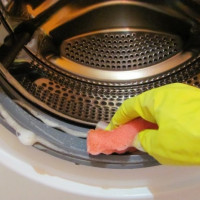 How to clean the drum in the washing machine: sequence of steps
How to clean the drum in the washing machine: sequence of steps  How much does it cost to connect gas to a private house: the price of organizing gas supply
How much does it cost to connect gas to a private house: the price of organizing gas supply  The best washing machines with dryer: model rating and customer tips
The best washing machines with dryer: model rating and customer tips  What is the color temperature of light and the nuances of choosing the temperature of the lamps to suit your needs
What is the color temperature of light and the nuances of choosing the temperature of the lamps to suit your needs  Replacement of a geyser in an apartment: replacement paperwork + basic norms and requirements
Replacement of a geyser in an apartment: replacement paperwork + basic norms and requirements
In principle, cleaning the filter of a washing machine is not very difficult, for most ordinary people. The main thing is not to bring to a neglected situation when conventional remedies like citric acid can no longer cope. But too often it is impossible to drive the machine with acid, this can lead to damage to some parts. Plus, you should carefully choose the dosage.
It’s really easy to clean the filter. First of all, you need to disconnect the machine from the network, shut off the water. Usually the filters are placed in front to get to them was easy. Remove the cover and unscrew the filter, and of course, wonder where the pebbles, trifle, threads and so on come from. It was so with me. But what they write correctly is to put a couple of rags under the typewriter and a little more near the filter itself. From there, water spills normally.